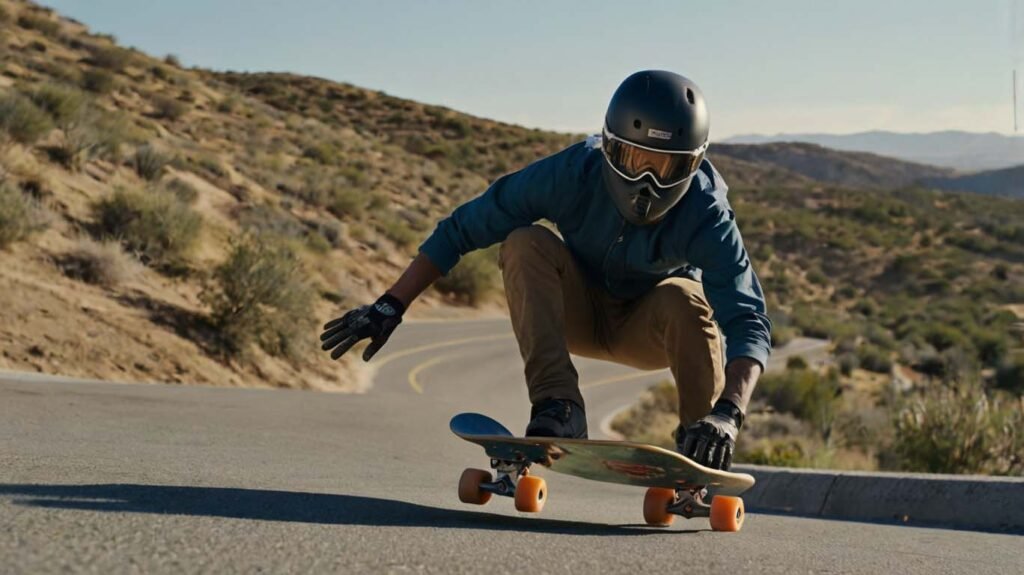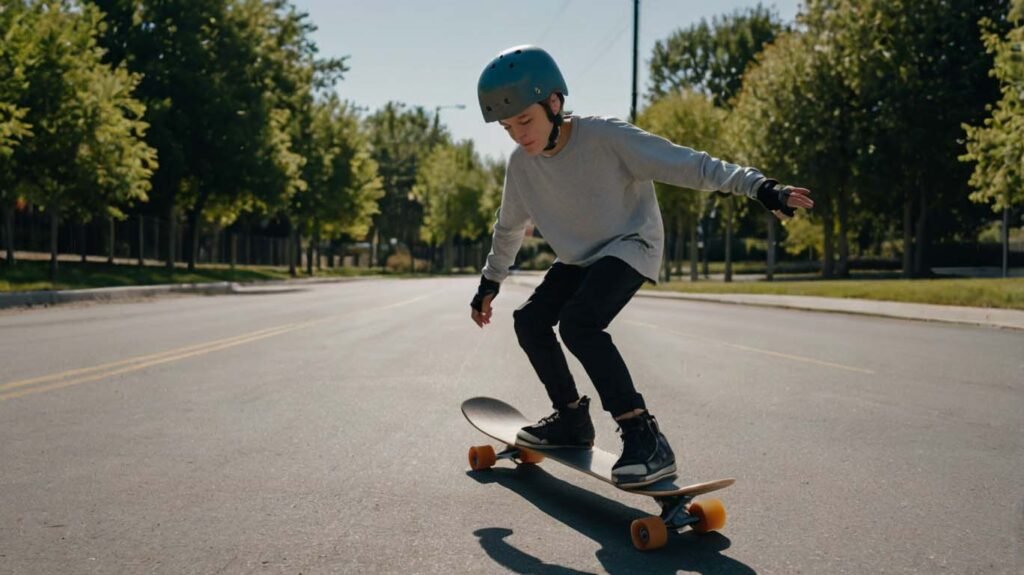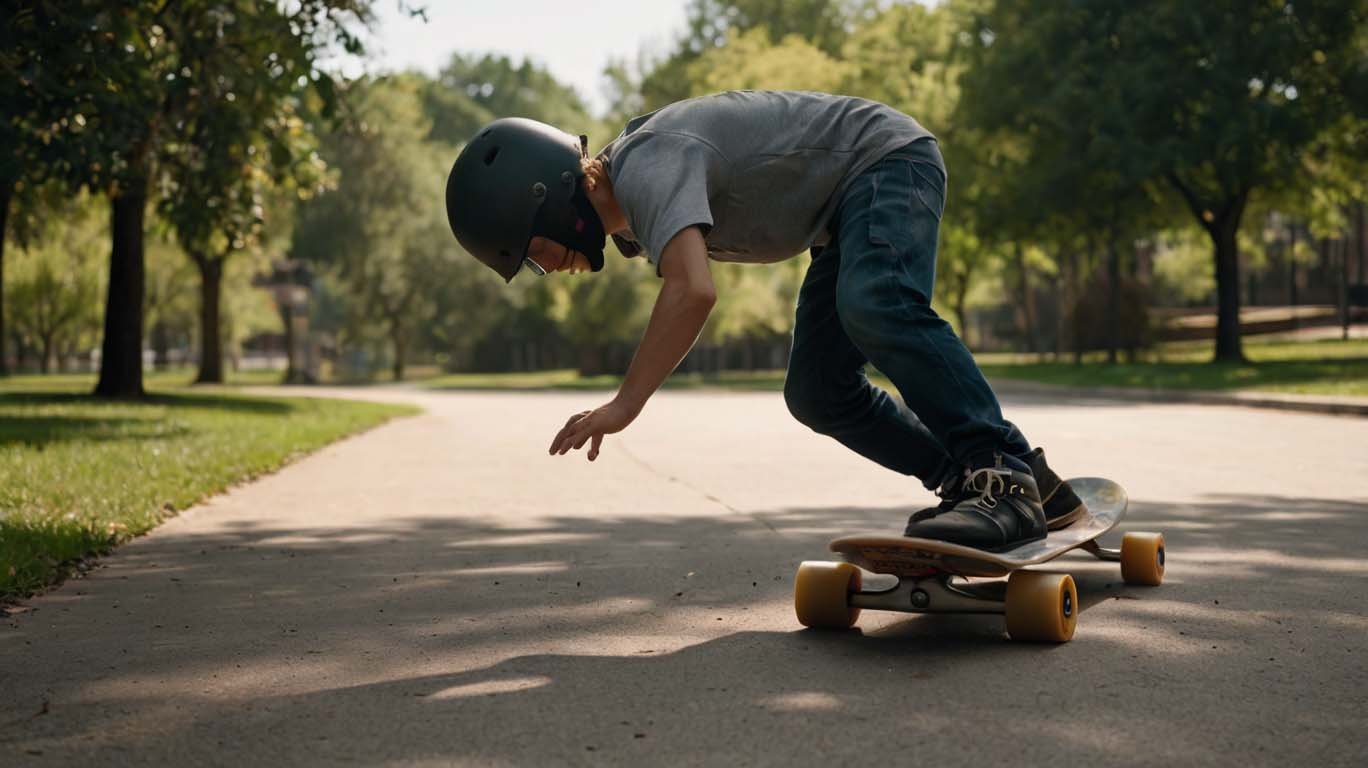To stop on a skateboard without falling, you need to learn simple and safe techniques that build your control and confidence. When you first step on a skateboard, it feels exciting. The wind in your face and the smooth motion make it fun. But then you wonder how to stop without crashing. That’s a common fear for beginners. Learning to stop is as important as learning to ride. It keeps you safe and gives you control. Also, it helps you enjoy skateboarding without stress.
This guide is here to make that part easy. No tricks, just real steps you can follow. Let’s get started and learn how to stop safely.
The Basics of Stopping on a Skateboard
Stopping on a skateboard starts with learning basic moves. Choose what feels right for your comfort level. Pay attention to your speed and surroundings. The right method depends on where you ride and how confident you feel.
Many beginners ask how to stop. It sounds simple, but it depends on a few things. Your confidence, where you’re skating, and your board type all matter. There’s no single right way. What works for one person might not work for another. But one thing is always true: Knowing how to stop is key to your safety.
Whether you’re cruising down the street or trying new moves, stopping helps you avoid falls and accidents. It’s not just about ending your ride, it’s about staying safe when something unexpected happens.
How to Stop on a Skateboard: 4 Key Techniques
Now that we understand why learning to stop is such an important part of skateboarding, it’s time to explore the different ways you can bring your board to a safe and controlled stop. Each of these methods has its advantages and can be used in different situations. Also, it depends on your skill level and the conditions of your ride.

1. Foot Braking: The Most Common Beginner Technique
Foot braking is the easiest and most common way for beginners to stop a skateboard. It works by using your back foot to gently drag on the ground and slow down. It’s simple, safe, and great for learning control.
Start by moving at a slow, steady pace. Don’t rush. Cruise gently so you feel stable. Place your front foot near the front of the board and keep it steady. Your back foot should rest near the tail, ready to move. When you’re ready to stop, lift your back foot off the board and place it flat on the ground behind you. Let it drag lightly. This creates friction and helps slow you down. Don’t press too hard at first because light pressure works best. If you push too much, you could lose balance. Stay relaxed and in control. Keep your body weight centered over the board to maintain balance while your foot is braking.
With practice, you’ll get the feel for it. Soon, you’ll be able to stop smoothly and safely. If you start going too fast, don’t panic. Use your back foot to gently slow yourself down and stay in control.
Always wear safety gear like a helmet and pads. It helps protect you while learning and gives you more confidence.
2. Heel Braking: A Subtle Alternative
Heel braking is a gentler way to stop a skateboard, using the edge of your back foot instead of the sole. It gives you more control without putting too much pressure on the ground. This method feels natural for some beginners and works well at slower speeds. Breaking process:
- Start by riding at a calm pace. Keep your front foot near the front of the board and your back foot near the tail.
- Shift more of your weight onto your back foot. This helps you stay stable while braking.
- Now lift the heel of your back foot off the board and gently place it on the ground. Let the edge of your heel touch the pavement.
- Apply light pressure. You should feel the board slow down. Add more pressure only if needed.
- Heel braking can feel easier on your legs, especially if you ride longer distances. It also gives you a bit more control than foot braking.
- It might take a few tries to get used to it. That’s okay. With practice, it becomes a smooth and safe way to stop
Heel braking might feel easier for some skaters because it uses the edge of your foot, not the whole sole. This can feel more natural and easier to control. It also puts less strain on your legs, which helps during long rides. Some people find it smoother than foot braking. It gives a softer stop and better balance for certain riders.
Still, it can be tricky at first. You might need extra practice to get it right. But once you’re used to it, heel braking becomes a simple and reliable way to stop your skateboard.
3. Slide Stopping: For Advanced Skateboarders
Slide stopping is a fast and powerful way to stop, but it’s best for advanced skateboarders. It works by turning your board sideways and using friction to slow down quickly. This move looks cool but needs good balance and control.

Start by picking up a bit more speed than you would for foot or heel braking. You need momentum to make the slide work. As you ride, turn your body and board sideways. Angle your front foot and keep your back foot flat. Press down on the tail as you turn. This helps the board slide across the ground. The friction will slow you down fast. Keep your body steady and avoid twisting too much. Focus on staying balanced through the slide.
It may take time to get the feel. Practice in a safe spot with your gear on. Once you master it, slide stopping becomes a fun and sharp way to control your speed.
Why Slide Stopping Is Advanced:
Slide stopping is advanced because it needs strong control and good balance. You must feel confident riding fast. Without experience, it’s easy to slip or fall during the slide. This technique is best for downhill rides or when you need to stop fast. It’s not meant for beginners. Try it only after you master basic braking and feel steady on your board.
4. Using the Tail to Stop: The “Stop” Position
Using your skateboard’s tail is one of the easiest ways to stop when riding slowly. This method is called the stop position. It works well once you feel steady on your board.
Start by riding at a calm speed. Then gently press the tail down by shifting some weight back. The tail touches the ground and creates friction. That drag slows you down until you come to a full stop. Keep your balance and avoid leaning too far. No need to lift your feet or step off.
This trick is great for beginners and works best at low to medium speeds. Use it when you are finishing a ride or need a quick, simple stop.
Why Knowing How to Brake on a Skateboard Is Essential for Beginners
Braking keeps you safe and in control while riding. It helps you avoid sudden obstacles and reduces the chance of injury. For beginners, learning to stop builds confidence from the very first ride. Learning how to brake is the first real step to staying safe on a skateboard. It is not just about slowing down. It is about staying in control and avoiding injuries.
As a beginner, you’ll face many new situations like a bump in the road, a sudden turn, or even a dog darting across your path. If you can’t stop when you need to, you risk falling or crashing. Learning to brake properly helps you stay calm and react quickly. It builds confidence every time you ride.
I remember a friend who was just starting. They went down a hill and could not stop when someone crossed their path. Luckily, they swerved in time. But it was a close call. After that, they spent days learning to stop. Now they never ride without practicing first.
Braking is not just a skill, it is your safety net. Every new rider should treat it as a top priority.
Avoid These Common Skateboarding Errors Every Beginner Makes
Everyone makes mistakes when learning to stop on a skateboard. That is normal. What matters is learning from them and getting better with practice. Let’s look at a few common mistakes and how to avoid them.
1. Relying Only on Foot Braking
Many beginners use just foot braking every time they need to stop. It works, but it is not always the best choice. If you are going fast or riding downhill, foot braking might not be enough.
Try other ways to stop like heel braking or slide stopping. Practice switching techniques based on your speed and surroundings. The more options you have, the more control you gain and that means a safer ride.
2. Poor Foot Positioning
Your feet guide your balance. If your foot is in the wrong spot, braking can feel shaky or even dangerous. This often leads to losing control.
Keep your front foot near the nose and your back foot over the tail. When using heel braking, place your heel so it touches the ground gently. Try these positions while moving slowly until it feel natural.
3. Avoiding Practice Because of Fear
Falling is scary. Many beginners avoid practicing stopping because they worry about crashing. But skipping practice just delays your progress.
Accept that falling might happen. Start practicing on smooth and quiet ground. Wear a helmet, knee pads, and elbow pads. The more you practice safely, the more confident and skilled you become.
Conclusion
Stopping on a skateboard is more than just a skill. It builds your confidence, keeps you safe, and gives you control. Whether you’re using your foot, heel, or sliding to stop, knowing how to slow down matters. Take your time. Practice often. Start slow and stay patient. Every try makes you better. Enjoy the process. Celebrate small wins. Skateboarding is about learning and having fun. Keep riding, stay safe, and check out our other guides if you want more tips or gear ideas.
Frequently Asked Questions on Skateboard Braking
How to stop on a skateboard without falling?
Start slow and practice often. Use foot braking or heel braking at low speeds until you feel steady. Balance is key. Always wear protective gear like a helmet and pads. It helps boost confidence and keeps you safe.
Why can’t I stop on my skateboard properly?
You might be placing your feet wrong or relying only on one method. Try different ways to brake on a skateboard. Mix foot braking and heel braking. Practice often and in safe places. You’ll get better with time.
What is the easiest way to stop a skateboard?
Foot braking is the easiest for most beginners. Just take your back foot off the board and drag it gently on the ground. Start slow. It works well on flat and smooth surfaces.
How to brake on a skateboard when going downhill?
Go slow before the slope. Use foot braking gently. Keep your front foot firm on the board. You can also try carving side to side to reduce speed. If you’re more advanced, practice slide stopping for better control.
How to brake on skateboards in busy areas?
Always use quick and simple methods. Foot braking is great when you need to stop fast. Stay alert. Avoid speeding. In crowded spots, slower is safer.
How to stop o skateboards without using your foot?
Try heel braking or using the tail. Push the back of your board down while leaning forward. It creates friction with the ground. It’s best for slower rides and flat roads.
How to brake on a skateboard safely as a beginner?
Start with foot braking. Learn on smooth ground. Wear safety gear and take your time. Do not rush. The more you practice, the more natural it feels. Build up speed slowly as you gain control.

